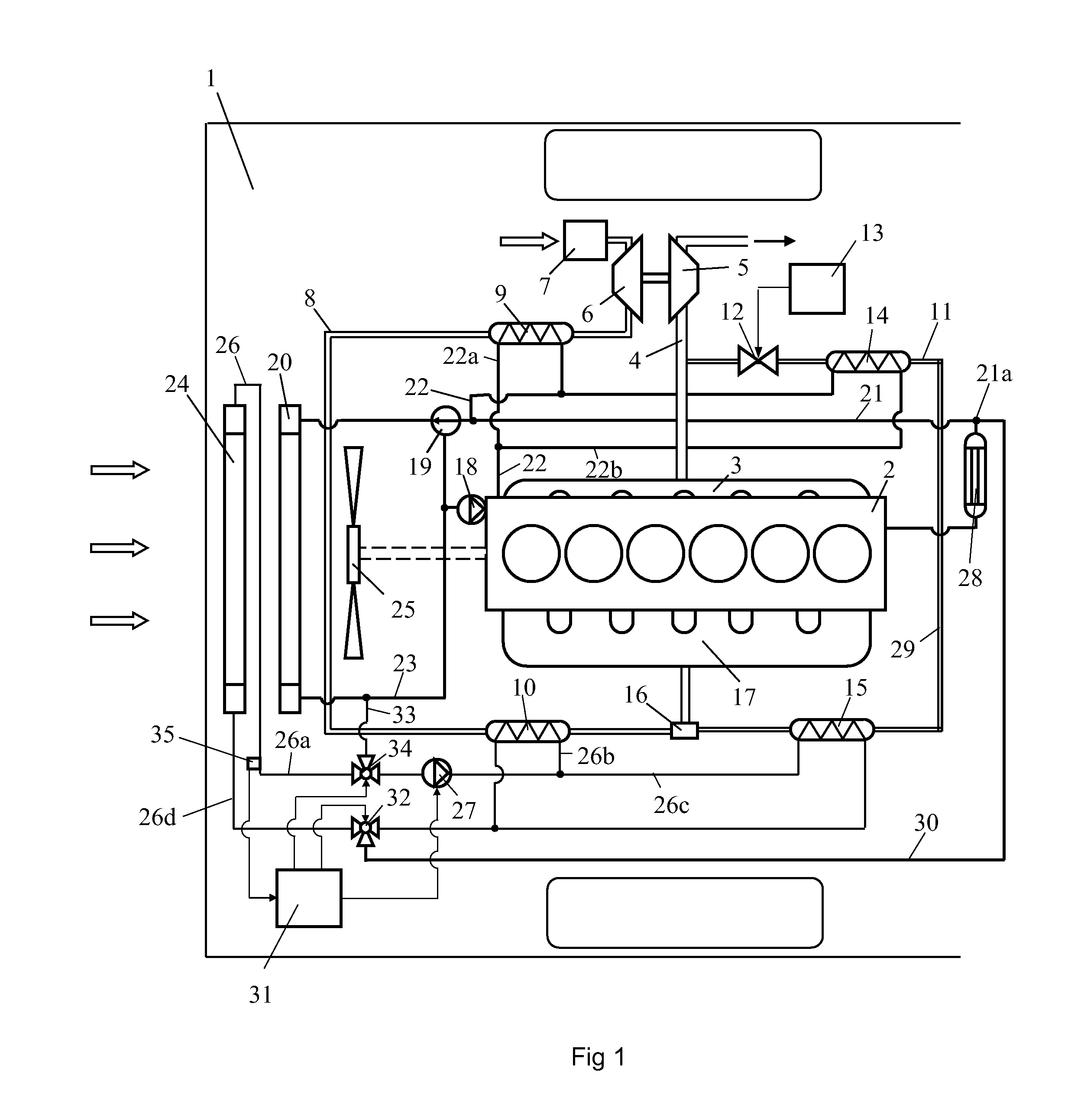Cooling arrangement for a supercharged internal combustion engine
a technology of internal combustion engine and cooling arrangement, which is applied in the direction of machines/engines, mechanical equipment, non-fuel substance addition to fuel, etc., can solve the problems of ice formation in the radiator, water condensed in the radiator may freeze to ice, and the risk of ice formation is greater
- Summary
- Abstract
- Description
- Claims
- Application Information
AI Technical Summary
Benefits of technology
Problems solved by technology
Method used
Image
Examples
Embodiment Construction
FIG. 1 depicts an arrangement for a supercharged combustion engine intended to power a schematically depicted vehicle 1. The combustion engine is here exemplified as a diesel engine 2. The diesel engine 2 may be used to power a heavy vehicle 1. The exhaust gases from the cylinders of the diesel engine 2 are led via an exhaust manifold 3 to an exhaust line 4. The diesel engine 2 is provided with a turbo unit which comprises a turbine 5 and a compressor 6. The exhaust gases in the exhaust line 4, which are at above atmospheric pressure, are led initially to the turbine 5. The turbine 5 is thus provided with driving power which is transferred, via a connection, to the compressor 6. The compressor 6 compresses air which is drawn into an air inlet line 8 via an air filter 7. The air in the inlet line 8 is cooled initially in a coolant-cooled first charge air cooler 9. The air is cooled in the first charge air cooler 9 by coolant from the combustion engine's cooling system. The compressed...
PUM
 Login to View More
Login to View More Abstract
Description
Claims
Application Information
 Login to View More
Login to View More - R&D
- Intellectual Property
- Life Sciences
- Materials
- Tech Scout
- Unparalleled Data Quality
- Higher Quality Content
- 60% Fewer Hallucinations
Browse by: Latest US Patents, China's latest patents, Technical Efficacy Thesaurus, Application Domain, Technology Topic, Popular Technical Reports.
© 2025 PatSnap. All rights reserved.Legal|Privacy policy|Modern Slavery Act Transparency Statement|Sitemap|About US| Contact US: help@patsnap.com


